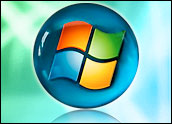
Microsoft launched another effort Tuesday to debunk the heavy criticism its Windows Vista operating system (OS) has received. But rather than sending out executives and evangelists to tout the benefits and new functionalities in Vista, Microsoft instead performed an experiment.
The test, much like a Pepsi versus Coke blind taste test, was designed to prove that consumers’ misconceptions about Vista, not the actual performance of the OS, are what have given the PC software a bad reputation.
“Unless this is the first post you’ve read here, you’ll know that I like Windows Vista, not because I work for Microsoft, but on its own merits. You’ll also know that I’m convinced that a lot (not all, but a lot) of negative perception about Vista is down to ignorance and problems of a bad press,” said James O’Neill, IT Evangelist for Microsoft UK.
“Someone had a bright idea. Let’s take people who don’t know Vista and ask them about their view of it. Then let’s show them Vista and see what they think; but let’s not tell them it is Vista. Let’s tell them they’re looking at a future Microsoft OS codenamed … ‘Mojave,'” he continued.
The software giant then published the results of its “Mojave Experiment” complete with video.
Perception Is Not Always Reality
Microsoft says it frequently conducts focus groups to better understand the needs of its customers. The Mojave Experiment was done as a way to understand how customers react to Windows Vista having never personally used it.
“We intend to use these videos as part of some upcoming Windows Vista marketing treatments. You can expect to continue to see ongoing product marketing efforts around Windows that communicates its value to our customers,” Craig Cincotta, Windows senior product manager, told TechNewsWorld.
Vista has an unearned reputation as a bad piece of software, and this marketing strategy could help change the minds of consumers, according to Laura DiDio, a Yankee Group research fellow.
“It’s clever. And they are correct in saying there’s been a lot of bad publicity out there about Vista. This is one way to combat it,” she told TechNewsWorld.
Like any sales pitch, the Mojave maneuver is designed to “infiltrate your consciousness,” she continued. “A lot of the press around Vista has been unfair and unwarranted. The operating system itself is not a bad operating system. It has a lot of improvements in it.”
Real World Testing
Microsoft’s decision to do something more aggressive than its usual “hand waving they do around a new product” was “a pretty smart idea,” said Stephen Kleynhans, a Gartner analyst.
“Going after people and show[ing] there are a lot of preconceived notions about what Vista is that do not necessarily reflect the reality of the product, was a good idea,” he told TechNewsWorld.
The release of Vista has been far from perfect, Kleynhans acknowledged, but it’s “a lot better than most people think it is. Particularly when you look at the product as it exists now, with Service Pack 1 and everything else to it, it’s actually not a bad platform. For a lot of consumers and a lot of folks who have modern hardware, it is a pretty good choice.”
One factor not readily apparent in Microsoft’s presentation of its Mojave Experiment was the hardware the company used to run the OS.
“In order to tell what people are really going to experience, that’s one of the things you need to know,” Michael Cherry, lead analyst at Directions On Microsoft, told TechNewsWorld.
“If they did this test where they went in and bought machines right off of the retailer’s shelves and did nothing more than turn them on, then it becomes more impressive than if the machines were tuned by Microsoft to ensure they were faultless,” Cherry explained.
Microsoft does not need to disclose the information, but it would be useful, he noted.
“What this does is inspire people to not merely dismiss [Vista] out of hand but to make their own evaluation,” Cherry said.





















































The critical title belies the rapturous Vista advertisement which follows.